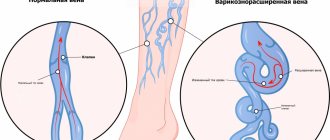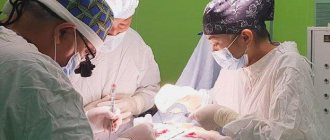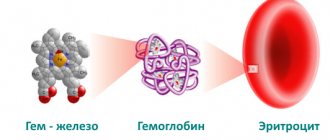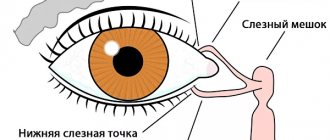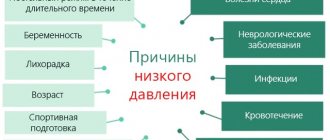In most cases, what a phlebologist treats and who he is, people find out only when there is an urgent need to make an appointment with this specialist. Despite the fact that phlebology is a “narrow” branch of angiology, it is a fairly broad medical specialization. What do phlebologists do? They specialize in diagnosing the condition of veins, developing treatment regimens, and also preventing the occurrence and progression of various lymphatic and venous pathologies. Phlebologists are the same as vascular surgeons. The only difference is that they specialize in varicose veins and other diseases of the veins of the lower extremities.
Why is it so important to contact a phlebologist on time?
Blood circulates in the body in a strictly defined direction in a closed cycle. Safety valves protect it from reverse movement. If they begin to function incorrectly, blood, under the influence of gravity, is retained in the lower part of the body, mainly in the legs. As a result, the walls of blood vessels may lose tone and become deformed. This is how varicose veins develop and thicken. Due to impaired blood circulation in these places, over time the vessels may become inflamed, which can lead to phlebitis. First of all, the pathology manifests itself in the legs, in the groin. Slowing blood flow and damaging vessel walls can lead to blood clots. If one of them comes off, then with the bloodstream it can enter the lungs through the right chambers of the heart or the inferior vena cava. This, in turn, can cause thromboembolism (blockage) of the pulmonary arteries and be fatal. That is why it is very important to consult a phlebologist in a timely manner.
How is the treatment carried out?
Therapy is individual and depends on the types of vascular diseases and their severity.
For example, in the case of varicose veins, specialists use pharmacotherapy, which consists of oral or local use of drugs that improve the tone of the veins. Antivaricose drugs counteract the effects of microcirculation disorders and lymphatic stagnation, which coexist with venous pathology. Symptoms of thrombosis require the administration of anticoagulants. Treatment of varicose veins is also based on compression therapy, that is, wearing elastic bandages or tights and compression stockings. Another method of treating the disease is sclerotherapy. It is based on intravascular injections of chemical decongestants.
What is the difference between a vascular surgeon and a phlebologist?
When it becomes necessary to make an appointment with a doctor who treats venous diseases, the question arises: what is the difference between a phlebologist and a vascular surgeon (angiosurgeon). Some are sure that there is no difference. However, it is worth understanding how the specializations of these doctors differ. An angiosurgeon is approached to treat congenital or acquired vascular diseases of the entire body. What does a phlebologist treat? He specializes in vascular pathologies of the lower extremities, as well as complications associated with them (for example, trophic ulcers). So, if you contact an angiosurgeon with varicose veins of the lower extremities, he will most likely redirect you to a phlebologist.
What are the advantages of treating vein diseases in our clinical centers?
- The colossal combined experience of our phlebologists is more than 15,000 operated patients.
- Excellent diagnostic base and examination protocols. The most experienced ultrasound diagnostic specialists work in our clinics.
- A full-fledged hospital for vascular and endovascular surgery with the possibility of microsurgical operations on venous valves.
- A program for monitoring and managing patients in the postoperative period with free correction of possible relapses.
- We solve all vascular problems in our patients, from spider veins to heart attacks.
- A program for creating a loyal environment in the patient community, when your friends are provided with more favorable conditions for treatment.
- Direct contact with your phlebologist, when the doctor leaves you a personal phone number for urgent communication.
- Opportunities for interactive consultations using the website, independent choice of time to sign up for a re-examination after treatment.
When you may need the help of a phlebologist
To avoid serious consequences, it is necessary to make an appointment with a doctor in a timely manner and begin therapy. Self-medication is not only ineffective, but sometimes even dangerous. Only a qualified specialist can prescribe a treatment method that is adequate to the current condition. So, you should contact a phlebologist if you have the following symptoms:
- heaviness in the legs, severe fatigue after walking;
- cramps of the calf muscles, especially often manifested at night;
- swelling of the legs;
- visual enlargement of veins;
- pain and burning in the legs;
- the appearance of spider veins, as well as blue or red vessels visible under the skin.
Thrombophlebitis of superficial veins.
The main cause of this condition is the presence of varicose veins (varicose veins). Manifestations of this disease are the presence of a sharply painful compaction in the form of a cord along one or more superficial veins, redness of the skin in this place, and swelling of the leg. The main danger in this situation is that the blood clot can grow, capturing more and more new veins (ascending thrombophlebitis). Ultimately, this blood clot can spread to the deep veins, causing thrombosis of them, with all the ensuing consequences (see above). I hope there is no need to talk about how important it is to see a phlebologist as early as possible. Treatment for this pathology is usually conservative (anti-inflammatory drugs, compression therapy, etc.). But in some cases: the so-called ascending thrombophlebitis, the patient may need to be urgently hospitalized in a hospital to perform an emergency operation. The purpose of the operation is to ligate the vein affected by the blood clot in order to prevent this blood clot from entering the deep veins. We’ll talk about the prevention of this condition a little later in the section: varicose veins.
Who may be at risk for phlebological diseases
Those who are at risk should be especially attentive to their health:
- persons whose relatives suffer from hereditary diseases of the venous vessels;
- To old people;
- persons who lead a sedentary lifestyle;
- people whose professional activities involve constant sitting;
- persons who abuse alcohol and have other bad habits;
- pregnant women (in particular, it is recommended to consult a doctor in the second or third trimester);
- persons whose professional activities involve heavy loads on their legs;
- people who have problems with excess weight.
Postthrombophlebetic syndrome.
This condition occurs after already cured, either superficial vein thrombophlebitis or deep vein thrombosis. But as a rule, we are always talking about the condition after deep vein thrombosis. Since the symptoms of CVI in this situation can only be explained by the condition after thrombosis. Unlike thrombophlebitis of the superficial veins. Because in this case it is impossible to answer the question - are these symptoms related to a post-thrombotic state or is it the result of varicose veins? The development of postthrombophlebitis syndrome is associated with those pathological changes in the vein wall and vein valves that occur after thrombosis and ultimately lead to a sharp increase in blood pressure in the vein. The main treatment is aimed at compensating this pressure (compression therapy) and strengthening the vascular wall (prescribing venotonics). There is currently no surgical treatment for postthrombophlebitis syndrome. Well, and finally, we move on to the disease, which is the main component of all vein diseases.
Diagnosis of phlebological diseases
As with many other diseases, timely diagnosis is of great importance. If venous disease of the lower extremities is identified at an early stage, it will be much easier to cope with it. So, the doctor may prescribe the following examinations - coagulogram, spiral computed tomography, ultrasound angioscanning, X-ray contrast venography. This allows you to assess the quality of blood flow and determine the nature of vascular pathologies. Taking into account the results of the examination and the severity of the disease, the phlebologist will prescribe the necessary treatment methods and subsequent rehabilitation in a particular case.
Advantages of GMS Hospital
The GMS Hospital medical center provides treatment for all types of phlebological diseases. The appointment is conducted by a cardiovascular surgeon, a phlebologist of the highest category. To diagnose vascular diseases, we use modern methods: computed tomography, duplex scanning, vascular ultrasound. Our medical center has a hospital where minimally invasive surgical operations are performed using innovative techniques and rehabilitation of patients with diseases of the veins and lymphatic vessels.
How to make an appointment
To get to a phlebologist at a medical clinic, click the “Self-book an appointment” button in the upper right corner of the page. Then fill out the short information form. To do this, provide all the necessary information: name, contact phone number, convenient date and time of appointment, and also select a clinic where it will be convenient for you to undergo the examination. In addition, you can make an appointment with a phlebologist by calling any phone number from the “Contacts” section. Our specialists will clarify prices, tell you about payment terms and answer all your questions.
What worries you?
- varicose veins
- Pain and heaviness in the legs
- Spider veins
- Lymphedema
- Swelling of the legs
- varicose veins
How does a consultation with a phlebologist proceed?
In order to make an appointment with a vascular surgeon at the phlebology center, you do not need to receive a referral or take time off from work. We will make an appointment for you at a convenient time and prepare the necessary equipment for this moment. If you have previous examination data, please bring it with you to your appointment. The examination takes place in a comfortable environment, after which the doctor usually prescribes additional tests and provides preliminary recommendations based on the clinical picture.
1
Make an appointment
To find out how to prepare for an examination with a phlebologist and ask other questions, call us by phone or fill out the online form on the website.
Make an appointment
2
Diagnosis and treatment
You can undergo a comprehensive examination and therapeutic procedures with us. All therapeutic and diagnostic measures are carried out under the supervision of experienced medical staff.
3
Observation
We recommend that you do not wait for painful symptoms to appear, but be examined by a doctor annually. This is especially important if you have a predisposition to vascular disease.
What diagnostic methods do medical specialists use?
A consultation with a phlebologist involves performing functional tests. This is a general designation for safe and painless tests, the purpose of which is to evaluate the reaction of the veins to external stimuli. In a lying or standing position, the doctor fixes the patient’s limb with an elastic bandage, and then asks him to perform various movements one by one.
The outflow and inflow of blood helps him judge the functional activity of the venous bed.
Diagnosis of acute and chronic pathologies involves the following studies:
laboratory tests to assess general health and identify the causes of venous circulation disorders;
biochemical blood tests to identify disorders indicating a predisposition to the formation of atherosclerotic plaques on the walls of blood vessels;
Doppler ultrasound is an informative instrumental method for assessing blood flow speed, diagnosing stenosis, deep vein thrombosis, thrombophlebitis, chronic venous insufficiency and other diseases;
Ultrasound duplex scanning is a technique for visualizing veins and surrounding connective tissue structures on a monitor screen in order to assess the patency of blood vessels, detect their narrowing, and blockage with blood clots.
Medical phlebologists have modern equipment with which they comprehensively examine patients with signs of diseases of the veins of the lower extremities.
What vein diseases does a phlebologist treat?
Our phlebology clinic provides treatment for varicose veins and other vein diseases using advanced technologies according to individual programs. We will help you not only cope with acute or chronic pathology, but also eliminate cosmetic defects.
Varicose veins (lat. Phleberism)
The pathology is manifested by dilation of the superficial veins of the lower extremities, thinning of the venous walls, and disruption of blood flow due to valve failure. Accompanied by a feeling of heaviness in the legs, swelling of the feet and legs, and periodic cramps. In the early stages of the disease, conservative treatment is possible; in the later stages, when thrombophlebitis appears, surgical interventions are no longer possible.
Reticular varicose veins
A chronic disease of the venous system, which causes mainly psychological discomfort due to the appearance of cosmetic defects. Reticular varicose veins appear in the form of translucency, sometimes a slight bulging of thin veins in the form of a mesh on the back and side surfaces of the legs. Responds well to therapy. The Miracle Doctor clinic performs vein removal using laser and other techniques.
Deep vein thrombosis
A pathological condition in which blood clots (blood clots) form in the veins, preventing normal blood circulation. The disease manifests itself as bursting pain, swelling of the legs, blue discoloration of the skin, and swelling of the superficial veins. Due to thrombosis, serious complications can develop (for example, pulmonary embolism), so the patient is usually hospitalized.
Postthrombophlebitic syndrome
Chronic obstruction of the outflow of venous blood from the lower extremities usually develops after deep vein thrombosis. Clinically, the pathology is manifested by a feeling of fullness in the affected limb, severe night cramps, swelling followed by tissue hardening, and ring-shaped pigmentation of the skin. The patient requires long-term conservative therapy or corrective surgery.
Phlebitis (lat. Phlebitis)
Pathology is an acute or chronic inflammation of the venous wall. Most often it is a consequence of complications of varicose veins of the lower extremities. Superficial and internal phlebitis is characterized by increased body temperature, general weakness, pain and swelling in the area of inflammation. Without timely treatment, the pathology is complicated by the formation of blood clots and progresses to thrombophlebitis.
Thrombophlebitis (lat. thrombophlebitis)
The disease is manifested by inflammation of the vein wall with the formation of a blood clot that blocks its lumen. As a result, the vessel expands, the tissues around it become painful, inflamed, and swollen. In most cases, a referral to an experienced vascular surgeon is required to perform the operation. The disease is dangerous due to the possibility of a blood clot breaking off, which can block deep veins or lead to thromboembolism of the branches of the pulmonary artery.
Trophic ulcer
Against the background of varicose veins, impaired lymph flow (lymphedema) and chronic venous insufficiency, non-healing wounds often occur. Most often they are localized on the lower third of the legs. Trophic ulcers can be accompanied by complications such as eczema, dermatitis, and inflammation of the periosteum. The patient most often requires complex conservative and surgical treatment.
Chronic venous insufficiency
CVI is a pathology that occurs due to a violation of the outflow of venous blood in the lower extremities. It manifests itself as increased fatigue, a feeling of heaviness in the legs, and cramps at night. It is also possible for swelling and age spots to appear in the shin area. CVI responds well to conservative treatment, however, without timely contact with a phlebologist, complications (trophic ulcers, etc.) are possible.
Spider veins (telangiectasia) (lat. telangiectasia)
Dilated small blood vessels, clearly visible under the skin, are usually localized on the face (on the wings of the nose, cheeks) and lower extremities. Pathology associated with impaired venous circulation does not always indicate serious vascular diseases and causes discomfort mainly due to cosmetic defects. We will help you eliminate this deficiency using gentle techniques.
What treatment methods do we use?
Treatment tactics depend on the severity of the ongoing degenerative, tumor, inflammatory process, including an infectious component. When determining it, the phlebologist also takes into account the patient’s age, the type of diagnosed pathology, and general health. You can get rid of venous stagnation, improve the condition of blood vessels, and forget about pain and heaviness in the legs using the following treatment methods:
conservative therapy using venotonics, glucocorticosteroids, anticoagulants, antiplatelet agents, non-steroidal anti-inflammatory drugs often helps eliminate not only the symptoms, but also the cause of the disease by restoring venous blood flow;
surgical operations are performed when acute ascending thrombophlebitis, severe varicose veins of 2 and 3 degrees, intense swelling, quickly spreading to healthy areas of the inflammatory or trophic process are detected in patients.
But the leading methods of surgical treatment always become minimally invasive operations. To perform them, you do not need to cut the skin or dissect soft tissue - a miniature puncture of the vessel is enough.
Our clinic practices operations that do not require long-term rehabilitation:
- sclerotherapy, during which the walls of the affected veins are glued together and removed from the venous circulation;
- laser treatment under local anesthesia, aimed at “sealing” damaged vessels from the inside;
- radiofrequency ablation, which seals the walls of veins using radio waves;
- microphlebectomy, during which the affected vessel is excised and healthy areas of tissue are sutured.
It is advisable to make an appointment with a phlebologist when the first discomfort appears in your legs at rest or when moving. This will prevent their rapid transformation into severe pain, which is typical for many pathologies of the venous bed. Diagnosing the disease at the initial stage is the best prevention of its progression with the development of serious complications.
Methods of surgical treatment of varicose veins.
Echo-controlled micro foam sclerotherapy. The most easily tolerated by the patient and yet the most rarely used technique. This would seem to be a paradox. Let's find out why. Sclerotherapy is performed like this. Under the control of ultrasound angioscanning, a catheter is inserted into the diseased vein, through which a special drug is injected in the form of foam. After which the vein “sticks together” (stops functioning). The manipulation lasts no more than half an hour. After which the patient goes about his business. There are practically no contraindications to this treatment. Everything is fine, but there is a very high percentage of reverse development of the disease (relapse). That is why this procedure is performed only on very elderly patients or those seriously ill with other diseases, for whom radical methods are contraindicated.
Endovasal laser coagulation or obliteration (EVLK or EVLO).
This operation does not have such a rich history as combined phlebectomy. Its active use began about fifteen years ago. And yet, today this is one of the most popular operations performed by phlebologists. This is due to the fact that the operation is less traumatic than combined phlebectomy. The absence of incisions makes it more attractive in terms of cosmetics and, immediately after the operation, getting off the operating table, the patient can begin his normal lifestyle. It happens like this. Under the control of ultrasound angioscanning, a special light guide is inserted into the affected vein along the entire length of the vein. The laser is supplied through this light guide. Due to the energy of the lazar, a high temperature is created in the vein. The vein is, as it were, “welded” - it turns into a tourniquet. The surgeon gradually advances the light guide and “welds” it along its entire length. This tourniquet will dissolve over time. Tributary veins into which the light guide cannot be inserted due to their strong tortuosity are removed using miniphlebectomy, the same as with combined phlebectomy. The operation lasts about 1 hour. After which the patient gets up and goes for a walk. After the operation it takes 40 minutes. walk around The operation has its limitations. This is primarily the diameter of the vein. If the vein diameter is more than 1 cm, the laser energy may not be enough to “seal” it. The degree of tortuosity of the vein is also taken into account. In some cases, it is simply not possible to extend the light guide along the entire length of the vein.
What diagnostic methods do we use?
The main method for diagnosing vein diseases is ultrasound duplex or triplex scanning.
Advantages of the method:
- Availability
(can be performed in any hospital or clinic, both routinely and for emergency indications); - Non-invasive
(does not require disruption of the skin or administration of any drugs); - Safety
(can be performed on pregnant women, children, patients with arrhythmias); - Information content
(ultrasound machines with linear 5 MHz sensors allow you to quickly and effectively assess the patency of veins, the condition of the valves, the presence of thrombotic masses, post-thrombotic changes); - Does not require special training
.
The examination of superficial veins, including varicose veins, is carried out in a vertical position of the patient on a special stand; the examination of deep veins, veins of the pelvis and abdominal cavity is carried out in a horizontal position of the patient. If necessary, to clarify the data obtained from ultrasound, other special research methods may be prescribed (plethysmography, ascending and descending venography, radionuclide venography, CT venography and MRI venography, intravascular ultrasound IVUS, thermography).
Ultrasound duplex scanning of veins.
- Duplex scanning of the veins of both lower extremities - 6,000 rubles.
- Duplex scanning of the veins of one lower extremity - RUB 3,500.
Laboratory research
- Clinical blood test - 950 rubles.
- Detailed coagulogram - 2,000 rubles.
- Blood test for D-dimer - RUB 1,250.
Phlebography
- Diagnostic angiography - RUB 23,000.
Radiofrequency ablation (RFB).
The essence of this operation is the same as with endovasal laser coagulation. This is a thermal effect on the vein. It works exactly the same way. The difference is in the energy source. In one case it is laser energy, in the other it is radio frequency energy. The choice of these 2 methods depends on the preferences of the phlebologist surgeon. In our phlebology center we use endovasal laser coagulation.
As you can see today, a phlebologist has a number of methods for treating varicose veins (removing affected veins). Each of these methods has its own advantages and disadvantages. Therefore, the choice of treatment method occurs individually, taking into account all the characteristics of a particular patient.
And one last thing. Vein diseases are a very serious problem, but this is not a death sentence. Today medicine has a wide range of methods for treating these diseases. If something bothers you, contact a phlebologist, he will help you.
Innovative treatment methods that are being developed by phlebological science:
- Conservative – new pharmacological drugs are being developed that can strengthen the venous wall
- Sclerosurgical – elimination of reticular (subcutaneous) varicose veins using FOAM-FORM sclerotherapy with CO2 gas under Venovisor
- Endovascular – elimination of main varicose veins using endovenous laser coagulation EVLT and radiofrequency ablation RFA
- Preventive – creation and improvement of compression hosiery, thinner, more durable and more comfortable
The desire to maintain one’s health is inherent in almost every person. This is why phlebology is so in demand today . Moscow is a large metropolis in which human physical activity is limited, and the number of negative factors is disproportionately large. The number of venous diseases of the human lower extremities is increasing every day.
Expert-level phlebologists working at MIFC, the Medical Innovative Phlebological Center, strive to solve the problem and help the maximum number of patients.
Phlebologist surgeon in Moscow - reviews from our grateful patients!
Patient's review of surgeon-phlebologist Semenov A.Yu.
Natalya Berdnikova, Moscow region, Sofrino, 06.16.2019
Dear Artem Yurievich! I would like to express my deep gratitude to you for the EVLO GSV surgery performed with Varadi miniphlebectomy on the lower leg and thigh. I am immensely glad and happy that I came to you for an appointment and treatment.
After a difficult birth, a lump appeared under the knee, varicose veins, a hereditary predisposition, pronounced veins, heaviness in the legs and constant fatigue bothered me. For 28 years she was indecisive, and the disease progressed. Diagnosis: varicothrombophlebitis. I was very lucky that I was in the safe hands of such a wonderful phlebologist as Artem Yurievich Semenov. Truly, a doctor from God! My life is saved! The operation was completely painless. After finishing all the procedures, as in a fairy tale, she stood up and walked with her own legs. Artem Yuryevich, low bow to you, you again gave me lightness and freedom of movement! THANK YOU so much for being you, for your wonderful attitude towards people, for your kind heart, for your invaluable work. Natalya Berdnikova, Moscow region, Sofrino, June 16, 2021
Patient's review of the surgeon-phlebologist, Ph.D. Raskine V.V.
Igor Osipenko, Moscow, 05/29/2018
I was diagnosed with varicose veins on my right leg in November 2021. I don’t have the habit of putting off solving health problems, so I immediately started looking for a clinic to perform the operation. I looked at reviews of clinics, compared ratings of surgeons on various websites and forums. As a result, the choice fell on MIFC. After 6 months after the operation, I can say with complete confidence that I was not mistaken in my choice. I am grateful to doctors Vladimir Vyacheslavovich Raskin and Artem Yurievich Semenov for their excellent work. The operation was successful, the postoperative period was smooth, and real professionals couldn’t have it any other way. I liked the clear organization of the process: initial examination, preoperative preparation, surgery, postoperative support. Special thanks to administrator Tatyana - she is the first to meet patients, and from the very first minutes of communication with her it becomes clear that in this clinic you will not be left without care and attention.” Igor Osipenko, Moscow, May 29, 2021
A patient's review of the wonderful surgeon-phlebologist Antipov A.A.
Vologina Alexandra, November 8, 2018, Smolensk
I would like to express my great (enormous) gratitude to the wonderful doctor Alexey Alexandrovich Antipov for a well-performed operation (EVLT), for his attentive attitude towards patients, for his sense of humor! At each subsequent appointment I go to Alexey Alexandrovich with pleasure, and not because I need to. In general, I was very afraid of the operation, I was scared to go, but everything went very well, thanks to the professional and coordinated work of these specialists.
And now my life is divided into “before” the operation and “after”. I finally felt like a full-fledged woman, not ashamed of myself, my legs!!! I am happy to demonstrate this. Thank you very much!!! Your grateful patient, Alexandra Vologina from Smolensk, November 08, 2021.
Aesthetic phlebology.
Now a few words about the so-called vascular networks, asterisks (reticular veins). These are veins that are located directly in the skin. Many people believe that this is the initial stage of varicose veins. It's a delusion. These wreaths are purely a cosmetic issue. They do you no harm. But you need to know that throughout life their number increases. Why this happens is not known. If they interfere with your life aesthetically, they can be removed. There are two ways. First: microsclerotherapy. A special substance is injected into the vein through a very thin needle and the vein sticks together and then disappears. The second is the use of a laser. The result is the same. The decision which of these methods to use is made by the phlebologist.
Combined phlebectomy.
This operation is over a hundred years old. Despite such an advanced age, this is one of the most frequently performed operations. Of course, during this time, with the development of medicine, it has undergone many improvements, which allows it to be used in a clinic (one-day hospital), as we do in our phlebological center. Contraindications to this operation are very old age or severe concomitant diseases. But with the advent of new methods of treating varicose veins, such as endovasal laser coagulation, this operation is performed in the most severe cases, when, for one reason or another, it is not possible to cure varicose veins by other means. This operation is used, as a rule, to remove the great saphenous vein and is performed as follows. A small incision is made along the inguinal fold (length about 5 cm).
The large saphenous vein is isolated, ligated at the point of its confluence with the deep vein and cut off, after which a metal probe is inserted into the lumen of the vein, which is removed through a centimeter incision, usually at the level of the knee joint (usually this is enough) and the vein is removed with this probe. After which the wounds are usually sutured with a cosmetic suture. In the second stage, through very small punctures (1 mm) with a special instrument, the tributaries of the removed vein (which were visible on the leg in the form of nodes before the operation) are removed. This is called a miniphlebectomy. These piercings do not require stitches. The operation lasts about 2 hours. After the operation, the patient is under the supervision of a doctor for some time. Then, he can go about his business. To the question, how long does the recovery period last? It's very individual. But most patients usually return to work the next day.
